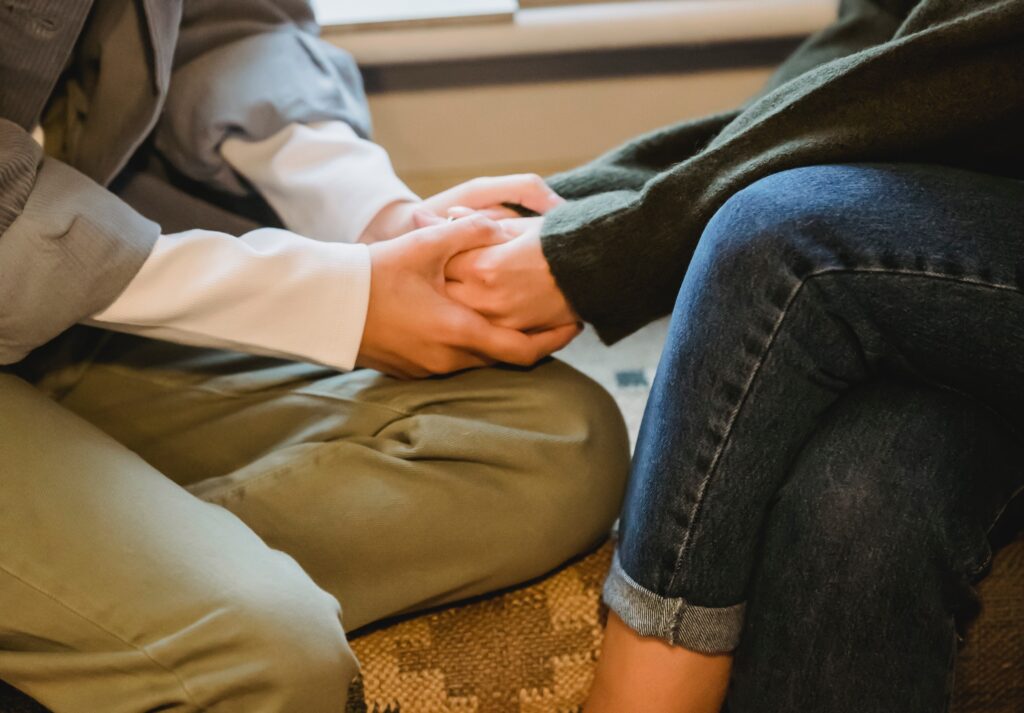When You Tell People: “I’m Fine”
According to the National Counselling Society, a recent study of over 2,000 people found that the average adult says “I’m fine” approximately 14 times per week, but less than 20% of these folks will actually mean it.
Can you relate? How many times have you responded this same way when prompted by a friend or loved one? How many times have you received this as a response, and not thought twice?
The phenomenon of saying “I’m fine” is part of a larger mental health trend that is sometimes referred to as “masking” where people put on a brave or happy front, rather than speak about how they are actually doing. This is often represented in antidepressant commercials where folks will literally carry around happy-face masks, somewhere on their person, to use while out in public. The phrase has also spawned countless internet memes and acronyms, including but not limited to: (F)reaked out, (I)nsecure, (N)eurotic & (E)motional, and the more compassionate/accurate (F)eelings (I)nside (N)ot (E)xpressed. Clearly, the world is in agreement that the word “fine” rarely means “okay”.
So, what does “I’m fine” really mean?
Sometimes, when people respond with “I’m fine”, what they’d really like to say is some variation of the following:
- Things are NOT fine / I am NOT okay
- I’ve really been struggling
- Things are very hard right now
- I’m overwhelmed
- It feels like everything’s falling apart
- I need someone to talk to
- I need help

Why say it when we don’t feel it?
There are many reasons why people respond with the simple refrain of “I’m fine” rather than speak the truth of what they are feeling, and these are just a few:
- Denial – Many people subscribe to the school of thought that says: “as long as I don’t talk about it, it’s not happening/not true”. Likewise, when problems feel overwhelming, or we don’t know how to solve them, sometimes it feels easier to suppress or avoid – but this strategy is rarely effective in the long run.
- Passive-Aggressive Communication – For individuals who were never taught to assertively state their needs, or express personal boundaries, the “I’m fine” response can sometimes be used to intentionally “signal” to a loved one or partner that they are not, in fact, okay. The problem with this type of passive (or subtextual) communication is that it leaves a lot of room for misunderstanding and potentially further conflict.
- Fear of Judgment – While society has made great strides in normalizing mental health concerns, we must acknowledge that stigmas do persist. As a result, many individuals are hesitant to share too much about their personal circumstances for fear of appearing “weak” or being judged by others. Honesty requires vulnerability and it can be hard to “open-up” if we don’t feel safe.
- Fear of Burdening Others – For caretakers and people-pleasers, it can feel painful to admit that you are the one who might need some help. Similarly, for those who wish to appear “low-maintenance” or “easy-going” there is sometimes the idea that showing your struggle or asking for help will be perceived as “burdensome” to those around you.
- Don’t Have the Words – Sometimes we would like very much to ask for help, but we just don’t know how! Not everyone was raised in a home where open and honest dialogue about difficult feelings was encouraged, nor has everyone been to therapy. Sometimes we simply don’t have the language to accurately express how we’re feeling, or articulate what we need from others.

What can we do instead?
So, the next time someone asks how you’re doing and you feel the urge to respond with ole’ faithful, consider these options instead:
- Identify a “safe space” for expressing difficult emotions – Whether you process the feelings in the moment (with the asker) or later/somewhere else, the important thing is to make space for those “true” emotions, whatever they may be. For some people, this might involve a later conversation with a “safe” and trusted loved one whereas for others it may be more of a solo activity (e.g. journalling, taking a long walk). Just remember: emotions demand to be felt (or “processed”), and they don’t like being suppressed.
- Move towards honesty – We’re not saying you need to initiate an in-depth therapy session in the middle of the breakroom but there’s a lot of daylight between radical honesty and closed-off denial. Even saying something as simple as “it’s been a rough couple of weeks but I’m hanging in there” is probably a more accurate representation of how things are than simply maintaining that things are great. And who knows, maybe that little bit of honesty will make way for further helpful conversations. Which brings us to item #3…
- Follow up and make space – This piece of advice is better suited to the one asking “how are you?” but is good for everyone to keep in mind. The next time you think about asking someone how they are doing, consider: (a) do you have sufficient time and space to receive an honest answer, and (b) can you commit to following-up with folks who may need a little extra prompting? You don’t need to pester people unnecessarily but a gentle and genuine prompt such as “no really…how are you doing?” can go a long way.
BONUS RECOMMENDATION:
To cap off this discussion, we thought we’d provide a bonus video from the TEDx Talk series on this very topic. Feel free to check it out here!



